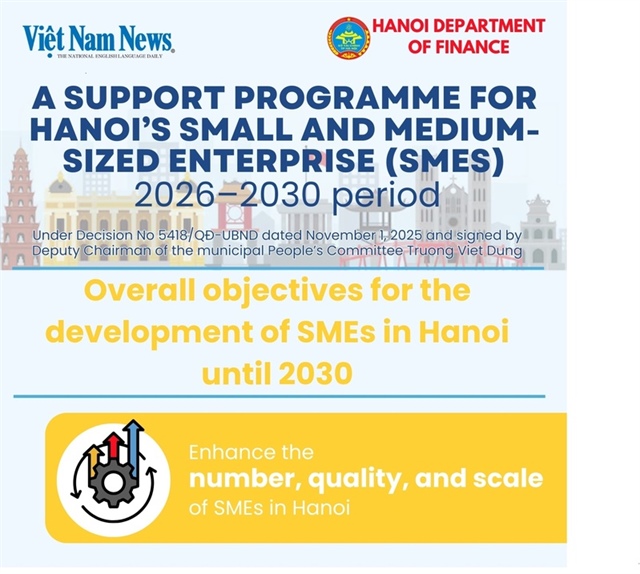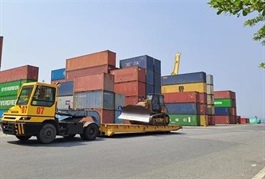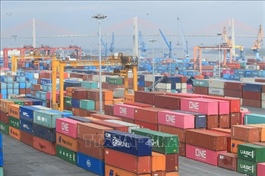Creative economy opens up new space for economic development
Creative economy opens up new space for economic development
Exporting creative goods generates billions of dollars for Vietnam each year, but understanding of this economy is still in its very preliminary stages.

A recently launched report conducted by the Central Institute for Economic Management (CIEM) and in collaboration with the German International Cooperation Organization (GIZ) has highlighted some of the strengths, weaknesses, opportunities, and challenges for creative economic development in Vietnam.
Of these strengths are a rich and diverse cultural heritage; a young, dynamic and technologically proficient population; and positive policy changes supporting new economic models.
Weaknesses are inherent limitations in funding, especially in traditional creative sectors; lack of many skills related to the creative economy in many creative groups, especially middle-aged and elderly people, women, localities with difficult socioeconomic conditions; and inadequacies in "hard" and "soft" infrastructure for creative economic development.
“The report will continue to be completed to advise the government on solutions to promote growth through creative economic development, especially building a national strategy on the creative economy," said Tran Thi Hong Minh, president of CIEM.
The report noted that the main trend of creative economy over the world was exporting creative goods and services. The export of creative goods in the world increased from $208 billion in 2002 to $524 billion in 2020, of which, Asia has been the largest export region since 2007.
The structure of exported creative goods has changed significantly since 2006. Exports of CDs, DVDs, tapes, newspapers, and other printed materials decreased significantly, while exports of media and video game recordings increased sharply.
While developed countries dominate exports of visual and audiovisual arts, developing countries dominate exports of design and handicrafts.
Exports of creative services in the world have increased from $487 billion in 2010 to nearly $1.1 trillion in 2020. Exports of creative services have outstripped exports of creative goods due to the sharp increase in exporting software, research and development (R&D) services, and digitalisation of some innovative goods.
Developed countries are stronger in exporting innovative services than developing countries, but the gap between these two groups of countries is gradually narrowing.
Head of the CIEM’s General Research Department Nguyen Anh Duong said that numerous new production industries in the creative industry's supply chain have formed and developed strongly in fashion/textiles, microelectronics, and IT.
A diverse economy with strong growth in tourism, high-level manufacturing, and some knowledge industries also creates better conditions for the creative industry in Vietnam to develop.
“However, with a low starting point, Vietnam needs to learn from the experiences of many countries, as most of them are paying a lot of attention to creative economics,” Duong said.
For example, in the 13th five-year plan (2016-2020), China considered the creative economy as a new industry, in addition to IT, biotechnology, and low-carbon technology, accounting for 15 per cent of GDP in 2020.
In South Korea, the creative economy has been set as a major agenda and policy since 2013. According to this country’s government, the creative economy is a new economic strategy, creating new industries and markets by integrating and adjusting imagination and creativity into science, information and communication technology, creating sustainable jobs, and strengthening traditional industries.
In Indonesia, a country similar to Vietnam, the creative economy contributed $82 billion to this country's GDP (accounting for 7.5 per cent), and $23.9 billion for exports (about 10 per cent) in 2021, using about 19 million employees.
Indonesia has established a specialised ministry and agency to manage the creative economy called the Ministry of Tourism and Creative Economy, as well as built a relatively complete legal system regarding creative industries, including the Industrial Design Law; Trademark Law, Copyright Law, and National Industrial Policy.
In the United States, 4.01 per cent of all businesses and 2.04 per cent of workers were engaged in various creative industry sectors. Arts and culture accounted for 4.4 per cent of GDP, equivalent to $1.02 trillion in 2021.
To support workers and businesses in the creative industries, the US government issued the Promotion of Local Arts and Creative Economy Act. This aims to increase federal resources and expand federal benefits to those who use their creativity and skills on the job, empower creative workers, spur growth in new and existing businesses, and promote the export of American culture abroad. The US has also established an interdisciplinary council to encourage the development of a creative economy.
Singapore has issued strategies to promote a top-down creative economy with the directions of the government and the coordination of agencies. This country develops the measurement system of a creative economy by promoting statistics, as well as building a master plan to coordinate and implement policies and strategies.



























